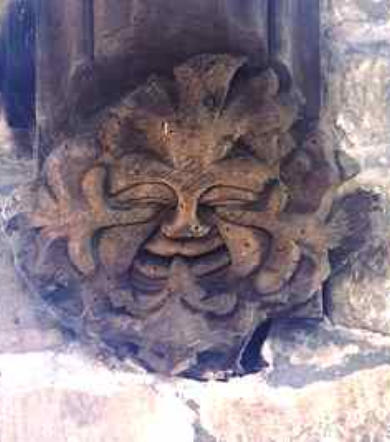aisle are those to John Bullivant (1761) and Daniel Bullivant (1788), since reordered to the tower and since Nichols' visit joined
by that to Daniel's wife, Mary (1810). But these three long, blue slates are difficult to reconcile with the size and shape of the
aforementioned recess, and any monument that may once have been situated here is something of a mystery.
The roof of the south aisle dates from the C15. It is arch-braced to resist the outward thrust of the clerestory on the south aisle's
south wall. The C15 masons must have been concerned about the aisle's ability to cope with the strain of supporting the new
clerestory. Not only did they brace the aisle roof, they also added a huge buttress on either side of the clerestory at its western
end. The arch braces are attractively carved with a variety of foliage designs, which are so naturalistic the botanist would have
no trouble identifying them. The braces are attached to timber wall posts. At the base of each of the seven wall posts is a
lozenge shaped panel bearing a representation of the face of a 'Green Man'.
The following images are shown by kind permission of Bob Trubshaw. Further information in on CD-ROM Interactive Gargoyles
and Grotesque Carvings of Leicesterhire and Rutland
These carvings occupy an unusual position in being attached to the feet of the wall posts, which have all the appearance of
having been sawn off at the bottom in order to accommodate the carvings of the Green Men. The panels upon which the Green
Men are carved look suspiciously like roof bosses, which must have come from the old chancel roof, or perhaps from the tie-
beams of the nave roof when both roofs were taken down in 1882. Notice how the second and fifth, from the east, of the Green
Men, have foliage not only coming out of their mouths, but unusually, out of their eyes as well.







































